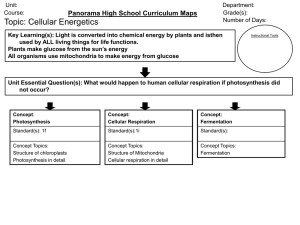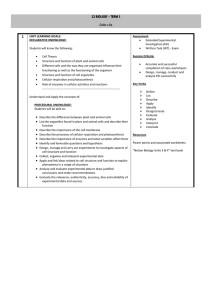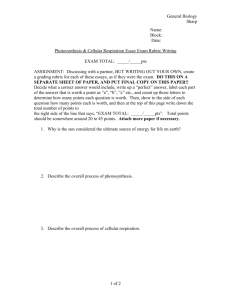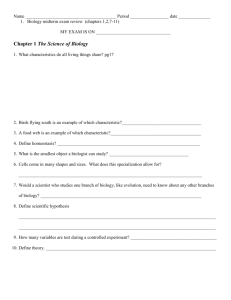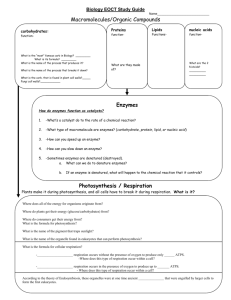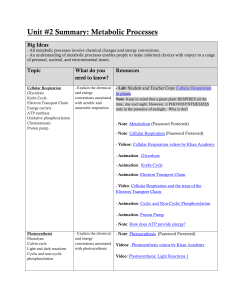Biology Exam 2 Study Guide: Macromolecules, Cells, & Metabolism
advertisement
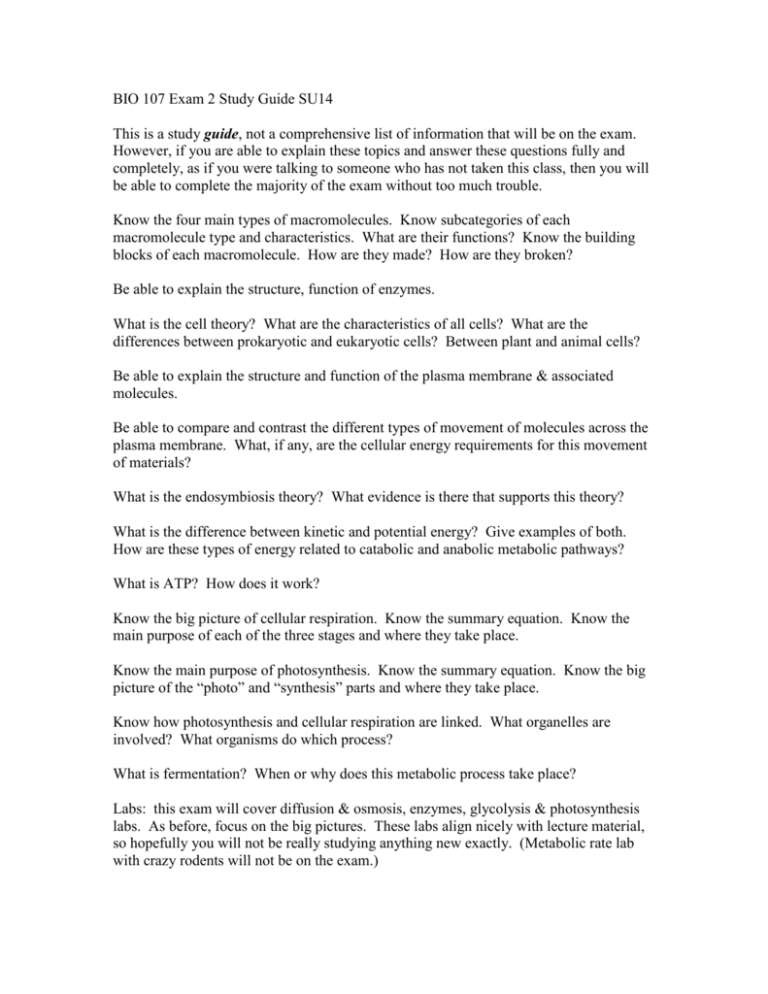
BIO 107 Exam 2 Study Guide SU14 This is a study guide, not a comprehensive list of information that will be on the exam. However, if you are able to explain these topics and answer these questions fully and completely, as if you were talking to someone who has not taken this class, then you will be able to complete the majority of the exam without too much trouble. Know the four main types of macromolecules. Know subcategories of each macromolecule type and characteristics. What are their functions? Know the building blocks of each macromolecule. How are they made? How are they broken? Be able to explain the structure, function of enzymes. What is the cell theory? What are the characteristics of all cells? What are the differences between prokaryotic and eukaryotic cells? Between plant and animal cells? Be able to explain the structure and function of the plasma membrane & associated molecules. Be able to compare and contrast the different types of movement of molecules across the plasma membrane. What, if any, are the cellular energy requirements for this movement of materials? What is the endosymbiosis theory? What evidence is there that supports this theory? What is the difference between kinetic and potential energy? Give examples of both. How are these types of energy related to catabolic and anabolic metabolic pathways? What is ATP? How does it work? Know the big picture of cellular respiration. Know the summary equation. Know the main purpose of each of the three stages and where they take place. Know the main purpose of photosynthesis. Know the summary equation. Know the big picture of the “photo” and “synthesis” parts and where they take place. Know how photosynthesis and cellular respiration are linked. What organelles are involved? What organisms do which process? What is fermentation? When or why does this metabolic process take place? Labs: this exam will cover diffusion & osmosis, enzymes, glycolysis & photosynthesis labs. As before, focus on the big pictures. These labs align nicely with lecture material, so hopefully you will not be really studying anything new exactly. (Metabolic rate lab with crazy rodents will not be on the exam.) Study your diagrams! They can be very helpful! If you can explain what a diagram is representing, you are in good shape.



